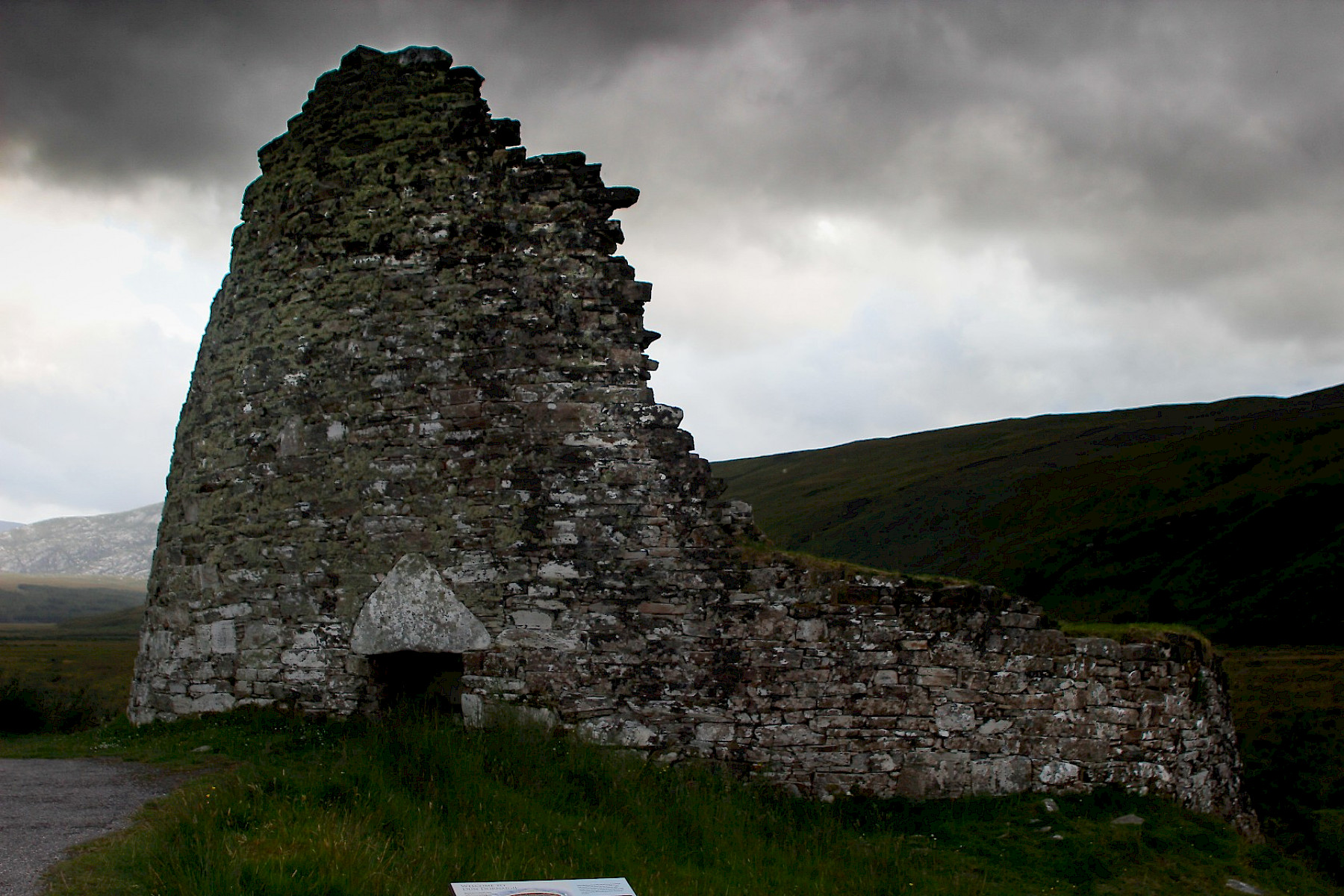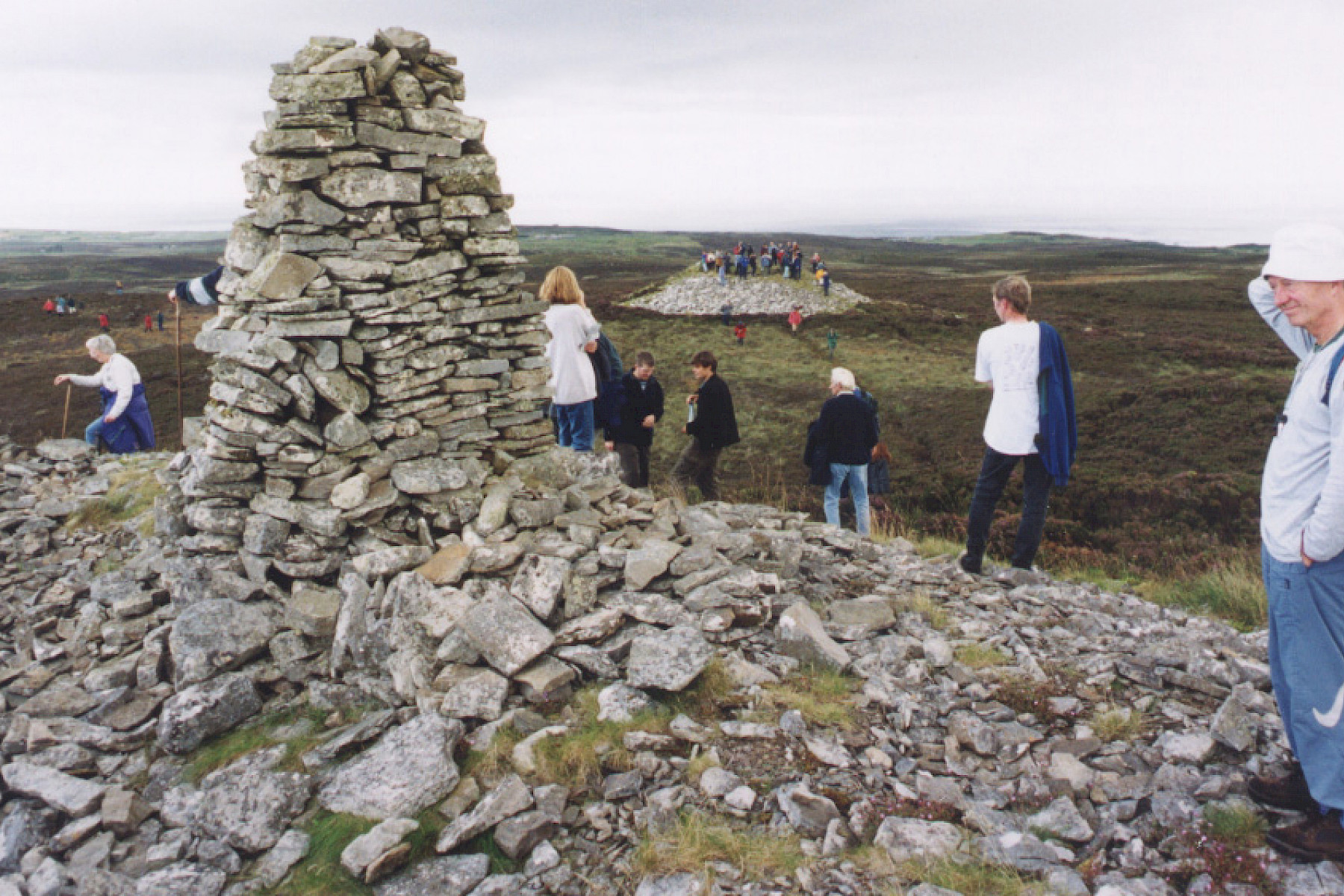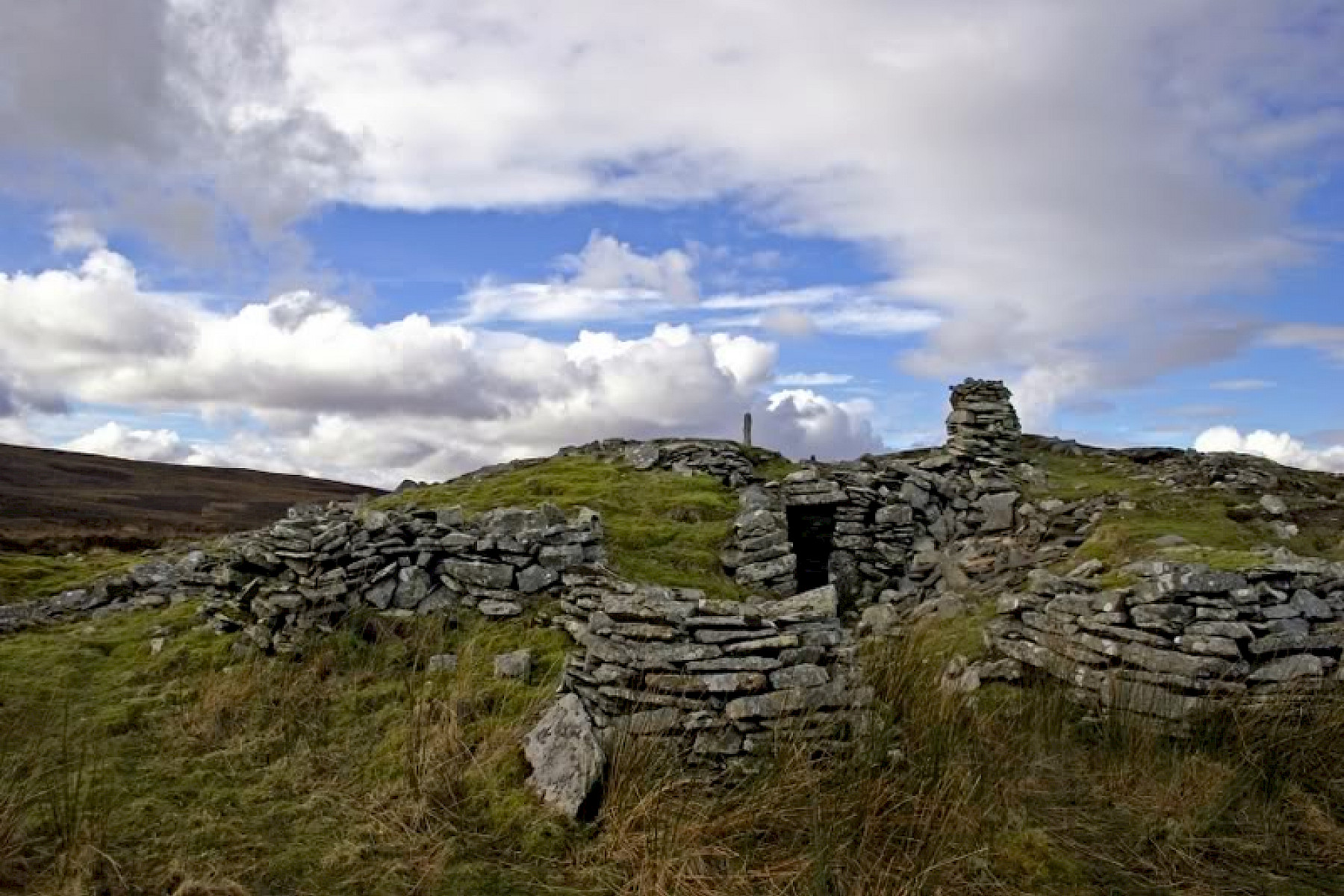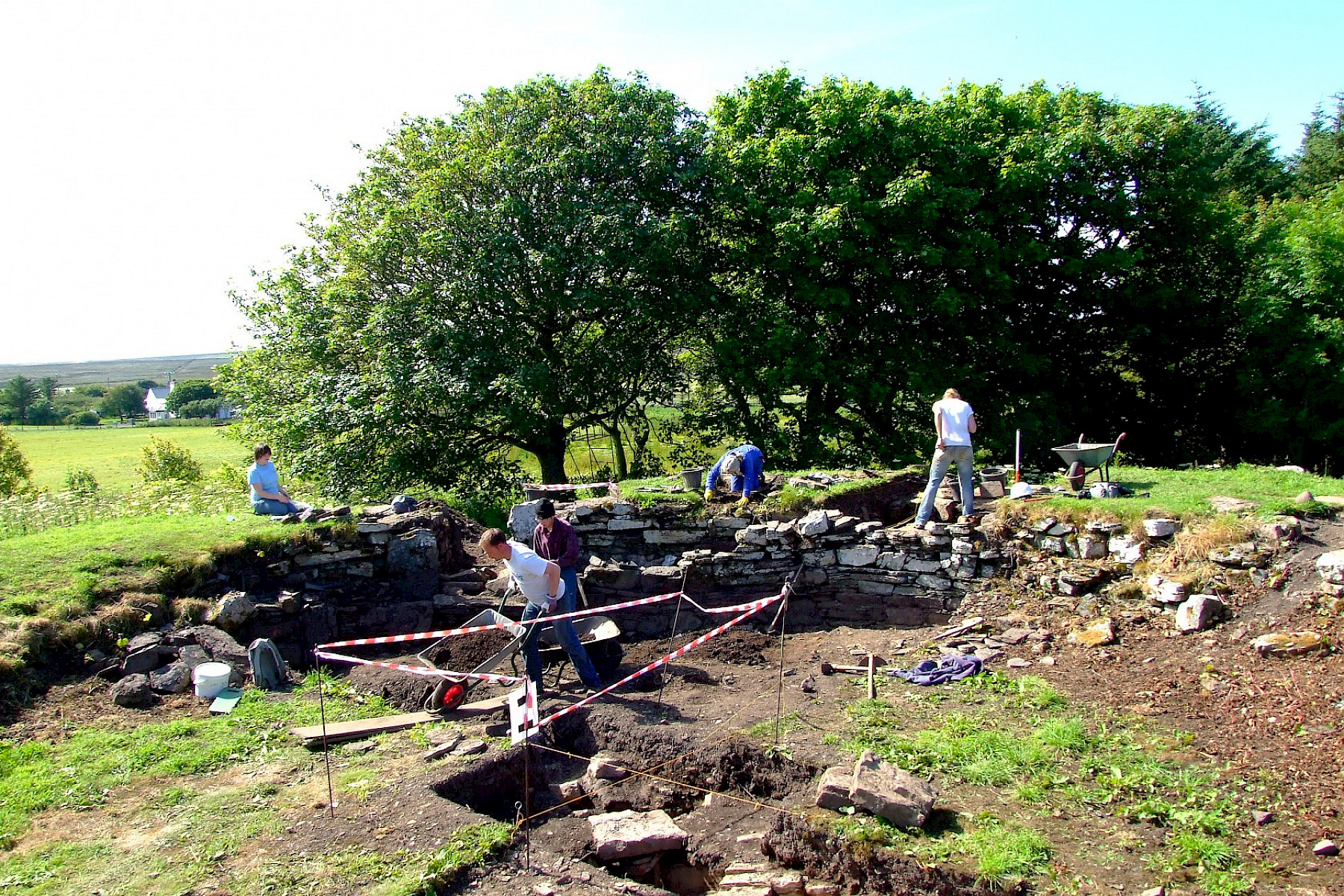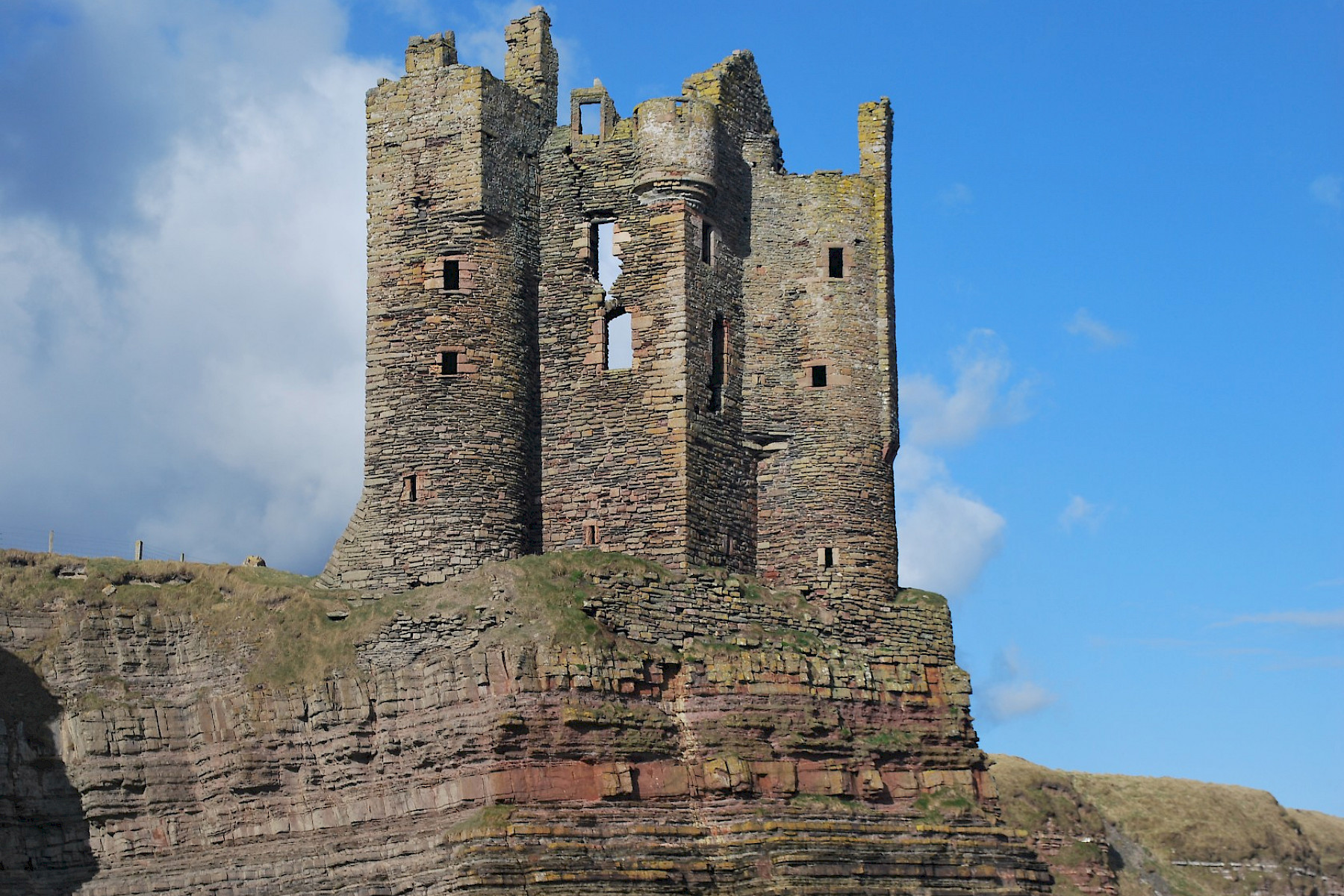Evidence for hunter-gatherers in the counties is ephemeral, only surviving as scatters of flint tools and implements and shell middens. Shell middens are found around the coast of northern Scotland, and are essentially mounds of shells, some with fish and animal bones, that are probably the by-product of many generations worth of meals. Scatters of flint are found across the counties and are thought to be where people were making and using tools – tools for hunting, butchering, hide processing and all other tasks that required sharp implements.
Flint tools continue in use through the Neolithic (c. 4000 BC) and the Bronze Age (c. 2500 BC), however these periods are characterised by the large monuments constructed by communities for the burial of their dead. In the Neolithic these monuments take the form of either long or round cairns containing a chamber entered through a low passage into which multiple burials would have been placed. They are found across northern Scotland, with notable concentrations in the Yarrows basin, Camster and Dounreay area (Caithness) and the Strath of Kildonan, Strathnaver and along the River Shin and Dornoch Firth (Sutherland). At some sites the chambers are still accessible. Bronze Age burial monuments are generally smaller than the Neolithic ones, and take the form of round cairns covering a single burial. The burials are often found in cists, stone lined boxes, accompanied by grave goods such as pottery, tools and jewellery. At these sites only the cairn is visible.
Caithness and Sutherland also contain a type of Bronze Age monument unique to this part of Scotland: the multiple stone row. These monuments are made up of several rows of small standing stones, with the rows set either parallel to each other or in a fan shape. Often, a cairn is located at one end of the rows. Why these monuments were built and how they were used remains a mystery, but theories range from each stone representing a dead person (in the form of a tombstone) to the monument as a whole being used as a lunar observatory. There are easily accessible stone row sites at Garrywhin and Hill o’Many Stanes (Caithness).
The Iron Age (c. 700 BC) in Caithness and Sutherland is characterised by Brochs. These buildings are amongst the most impressive prehistoric structures in Britain, and would have originally comprised an enormous circular tower. The construction methods used are complex, with a double wall encircling a central space, with the walls tied together up the height of the tower. Stairs were built into the space between the walls, and these are thought to have provided access to multiple floors within the tower. The Brochs were probably used as fortified dwellings, and several have ancillary settlements around the base of the tower. These settlements continued to be lived in after the Brochs had gone out of use, and by the Pictish period (c. AD 400) many of the structures had been redesigned or rebuilt. There are many brochs visible across northern Scotland, but particularly good examples are found at Carn Liath and Dun Dornaigil (Sutherland), and Nybster and Yarrows (Caithness).
In the mid-first millennium AD a number of religious sites were established across northern Scotland. At Dunbeath an early Christian site is recorded on Chapel Hill. The chapel is thought to have remained in use until the eighteenth century, but its early origins have been shown by the discovery of the Ballachly stone, a seventh century cross inscribed stone that is now on display at Dunbeath Heritage Centre. Further discoveries of stones inscribed with Christian motifs have shown that this was a significant religious site, probably a monastery.
The presence of Vikings in northern Scotland (c. AD 800) is most evident today in place names containing elements of Norse – Vik meaning ‘Bay’ (as in Wick), -bster meaning farm or small settlement (as in Lybster). Even the names of the counties have a Viking heritage, as Caithness derives from the Norse Katanes (meaning promontory of the Cat peopled) and Sutherland from Suðrland (meaning Southland). Archaeological evidence for the Vikings in the counties comes from finds of settlement remains, burials and finds including bone combs and decorated metal items.
The medieval period saw the construction of castles all around the coast of northern Scotland, built by successive Earls of Caithness and Sutherland. Many survive as ruins, perched precariously on cliff tops, and some are still lived in. The most spectacular castle ruins are Girnigoe and Sinclair Castles (Caithness) which appear to rise out of the rock at the southern end of Sinclair Bay. Other easily accessible castles are Ardvreck and Borve castles (Sutherland) and Forse castle (Caithness).
Settlements dating to the medieval and post-medieval periods are found throughout the counties, and are visible as small clusters of buildings and fields. Prior to the highland clearances, when crofters and farmers were removed from their homes and farmland by the landowners to make way for sheep farms, people were living throughout the counties. An example of a pre-clearance settlements can be seen at Achanlochy in Strathnaver, where remains of houses, fields and corn drying kilns can be seen. In contrast, the post-clearance settlement of Badbea in Caithness provides stark evidence of how people were forced to adapt and made to live on tracts of land entirely unsuitable for the agricultural life they were used to.
In the twentieth century the counties became the focus for defence, during World War II, and nuclear power generation. The north of Scotland was an area of strategic importance during the war, with pillboxes, coastal defences and anti-aircraft ditches built to halt a German invasion. At Reiss, the remains of anti-tank obstacles can be seen on the beach. At Dounreay, the nuclear power station remains a potent reminder of our modern need for power. The site was built in 1955 and produced electricity until the 1990s. It is in the process of being decommissioned, and is closed to visitors, but can be viewed from the A836 west of Thurso.
- View our Heritage Map page to discover our many wonderful heritage sites in Caithness and Sutherland
- Download our Heritage App to take with you on your explorations

